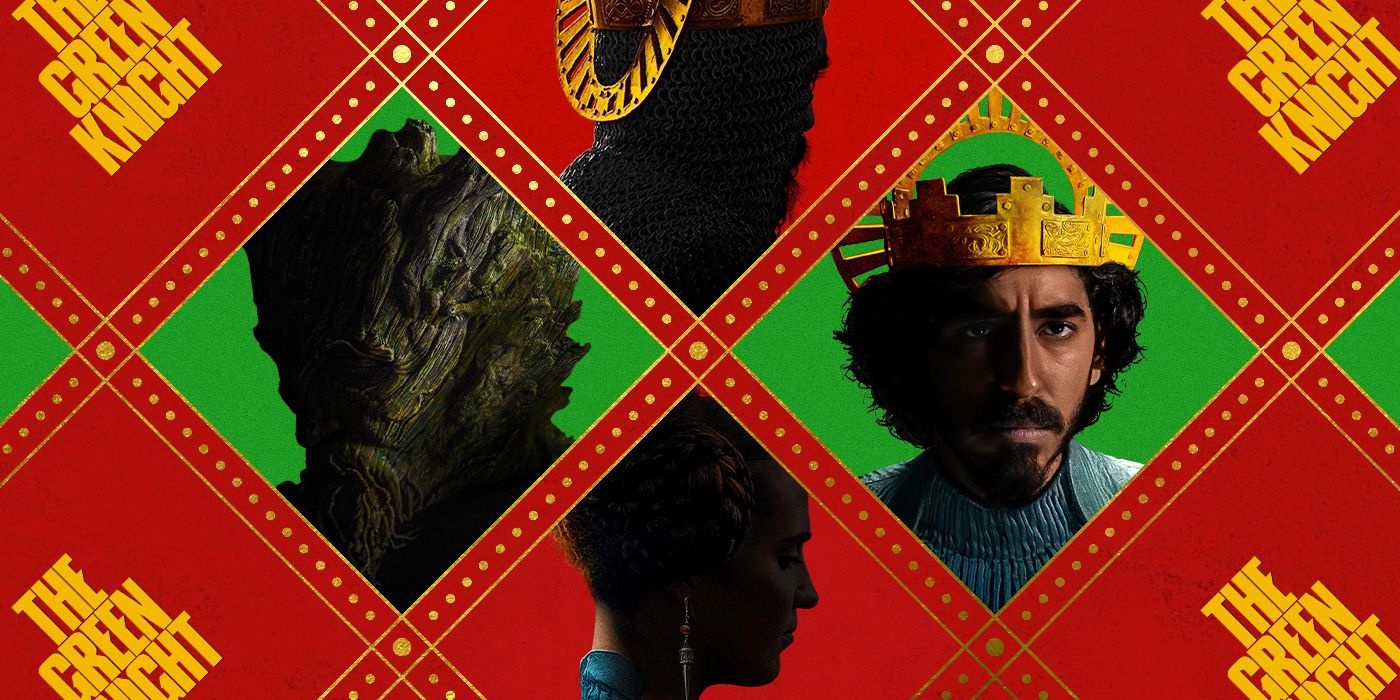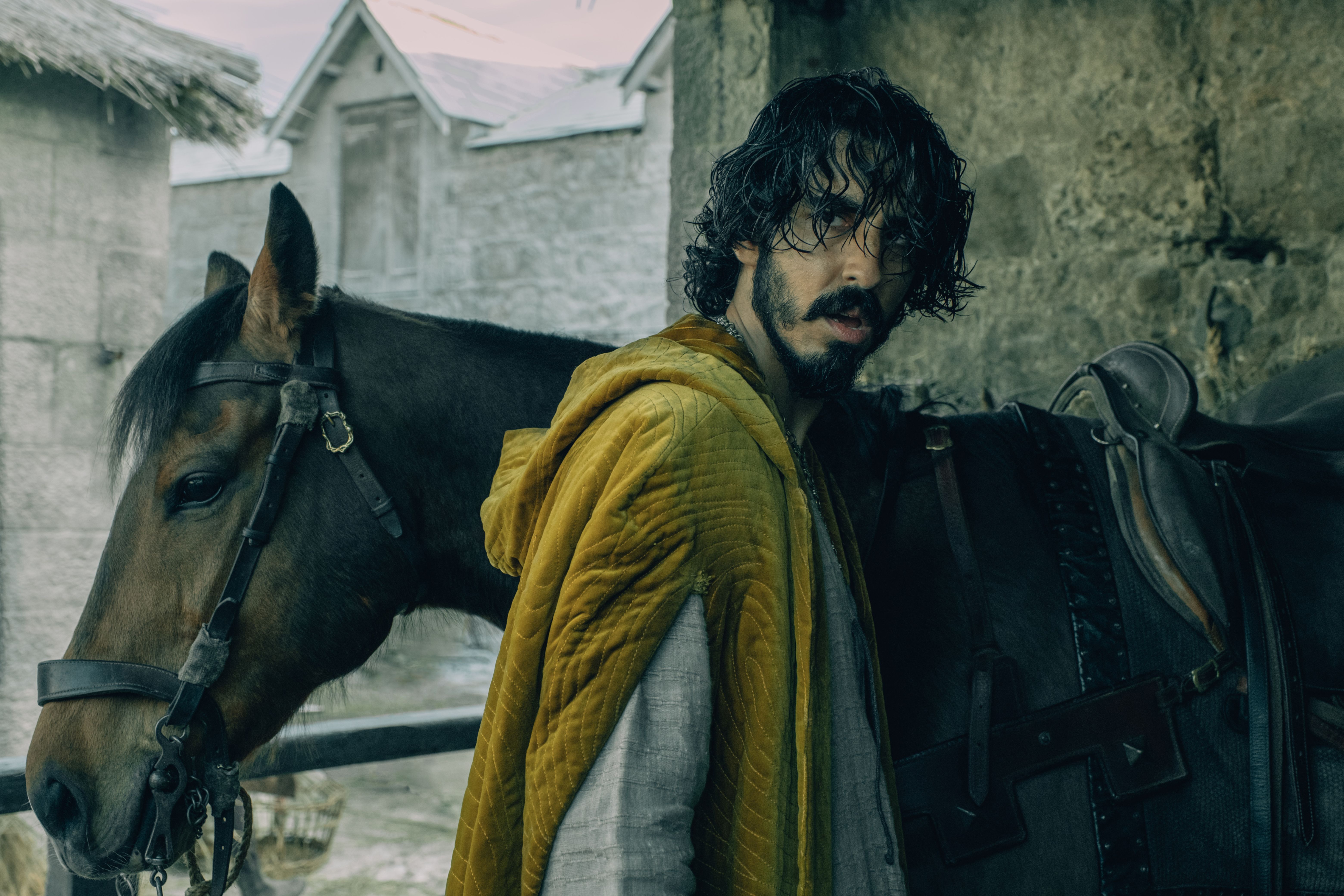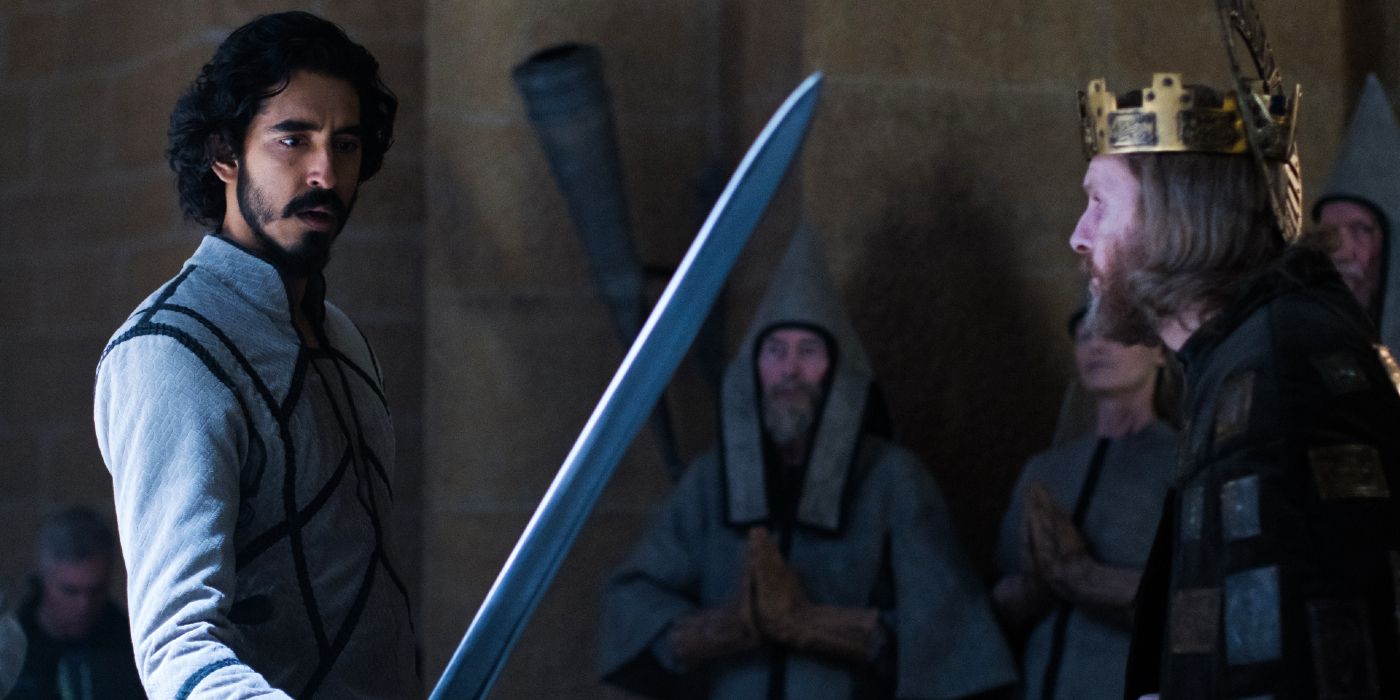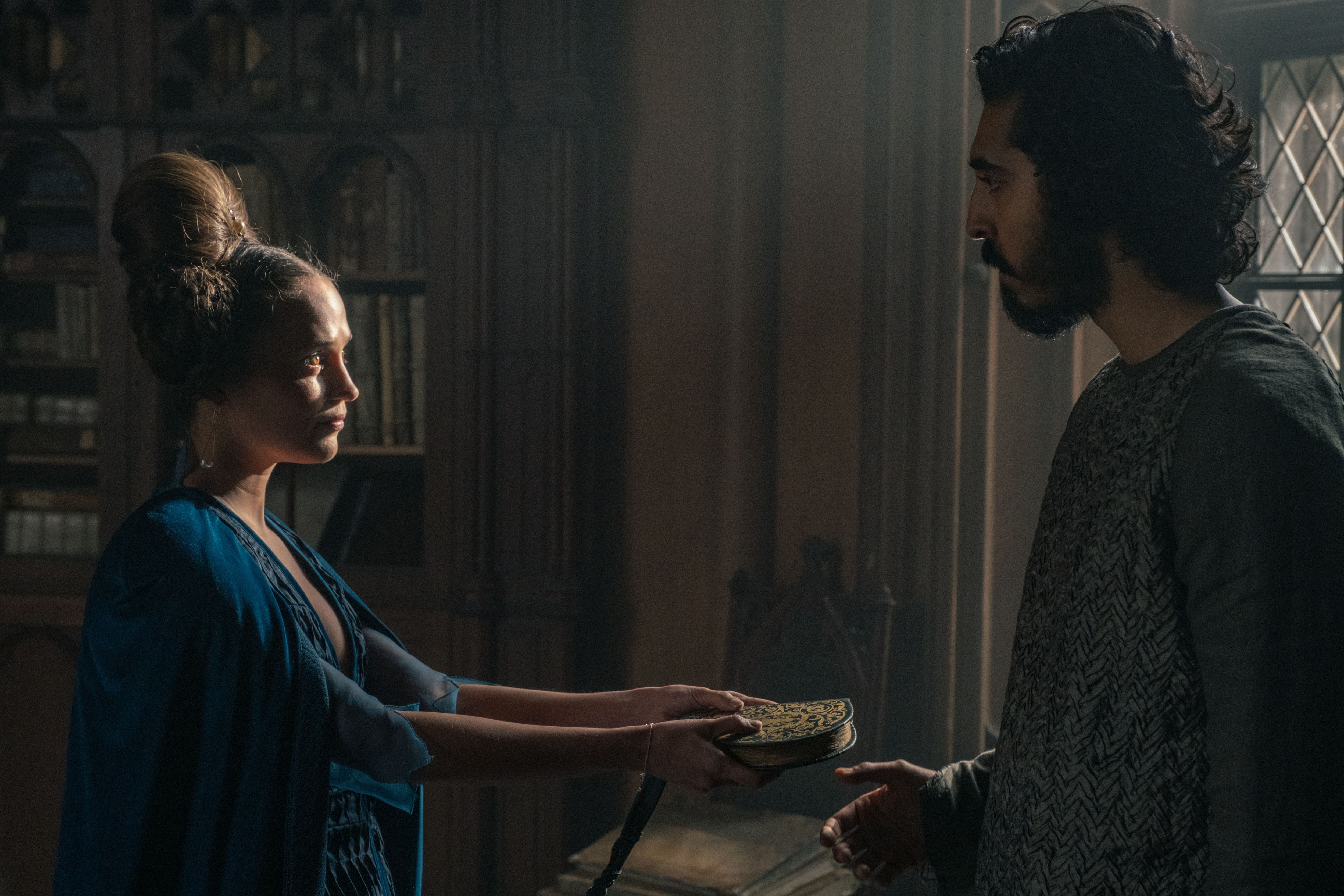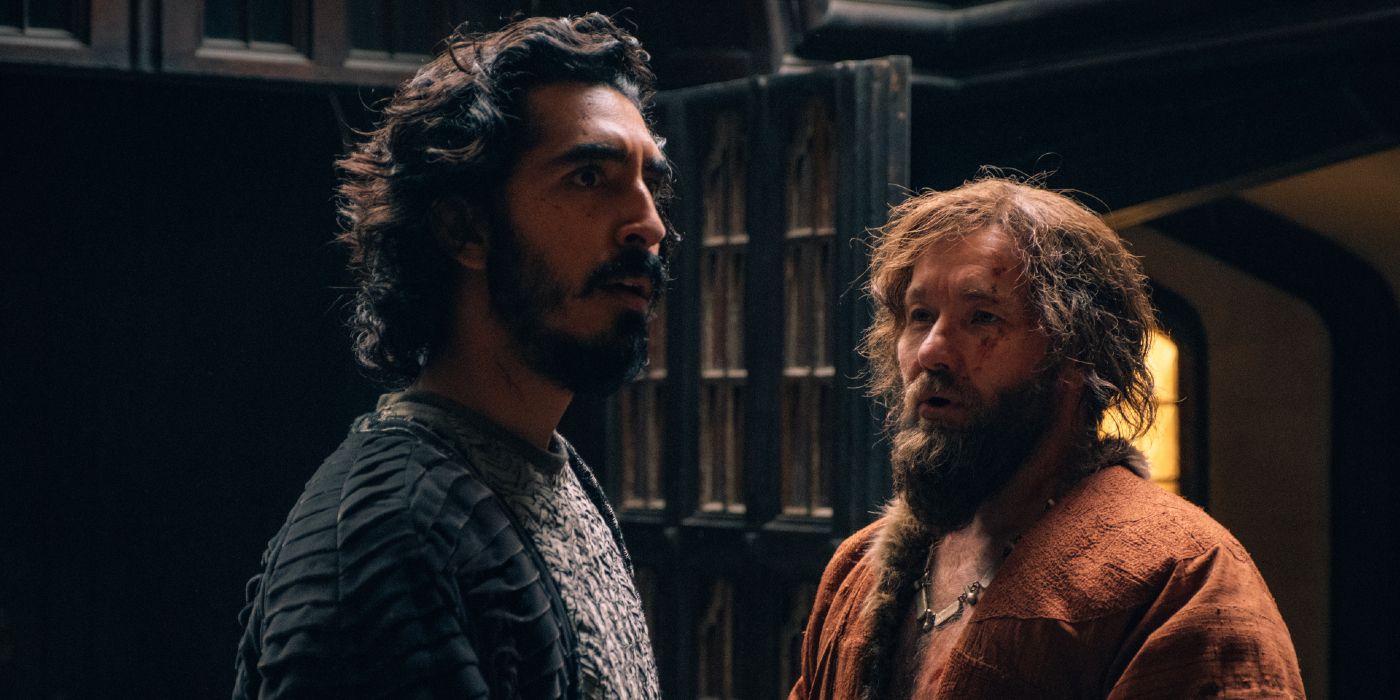The Green Knight, one of the best films of 2021, has earned its praise based on a number of criteria. It's a unique take on a classic poem, a dreamlike, highly stylized approach to an Arthurian legend, and it also features a very talented cast. The film also features striking visuals and vivid colors that imbue the film with meaning beyond the text. The following is a journey of color symbolism, from the prophetic opening to the film's ending in the Green Chapel.
The film opens on Gawain (Dev Patel) seated on a throne, draped in yellow robes. In some cultures, yellow has been symbolic of royalty. It also represents cowardice. Throughout the film, Gawain is adorned in yellow while on a quest to prove his bravery. In the end, he succeeds; the last line of the film, delivered by the Green Knight himself (Ralph Ineson), is: “Well done, my brave knight. Now, off with your head.”
Gawain’s foil outside himself is the Green Knight, a tree-creature adorned in (you guessed it) green. As The Lady (Alicia Vikander) will later point out, green is “the color of earth, of living things, of life”. Green is also the color of death. Or, perhaps more accurately, the color of what follows death. Green is what follows all things; it is persistent, unavoidable, and patient. Given the nature of the Green Knight’s challenge, the color is apt.
Green also symbolizes nature, this theme of man vs. nature is present throughout the film. Man “civilizes” nature, erecting castles and battlements in order to keep it from coming in. But the Green Knight strides into King Arthur’s Christmas celebration; not aggressively, not maliciously, but calmly and resolutely. Green knows its place is in all things, and does not fight time, but recognizes its partnership with time as a steady accomplice.
While on his way to the Green Chapel, Gawain encounters a young man scavenging through an old battlefield. The young man (Barry Keoghan) presents himself as an ally, but there’s something off about him that Gawain doesn’t pick up on. He takes bad direction, and later the young man and his accomplices ambush Gawain in the woods, rob him, tie him to a tree, and leave him for dead. A dream-like sequence speeds through time, showing Gawain’s dead body decomposing into a skeleton, as the surrounding green becomes more vivid and covers his dead form.
Gawain is surrounded by green on his journey outside the village walls and into the wilderness, towards the Green Chapel. This makes Gawain’s quest to achieve greatness and establish a legacy appear draped in futility – as a reminder that any monument to the achievement of man will one day be covered over in green.
Green, being the titular color of the film, serves many purposes. In addition to symbolizing nature, life, death, decay, and time, it also represents Gawain’s newness. He himself is a “green” knight, in that he isn’t actually a knight yet, but everyone expects it will only be a matter of time before he proves himself and takes his place as one. He’s inexperienced; in an early conversation with King Arthur (Sean Harris), Gawain laments that he has no stories to tell. This is the motivating factor for his acceptance of the Green Knight’s challenge.
Red makes a notable entrance when Gawain stops to help St. Winifred (Erin Kellyman), a young woman who has lost her head. She tells Gawain the story of a man who tried to rape her; when she fought back, he cut off her head. It now lies at the bottom of a pond, and Gawain must retrieve it. As he dives in, the water suddenly becomes a vivid red. Red traditionally symbolizes many things, danger and lust being the most notable.
The red light permeating the water, coloring Winifred’s skull, and engulfing Gawain himself is reflective of the act that led to Winifred's death. A violent, lust-driven crime resulted in a young woman’s head at the bottom of a pond, so when Gawain asks her what she’ll give him in return for his service, her reply, “Why would you ask me that? Why would you ever ask me that?” is as striking as the crimson-colored water.
Gawain’s next stop in his journey is at the home of The Lord (Joel Edgerton) and The Lady. The Lady is notably always dressed in a gown and robes of blue. She also happens to look exactly like Gawain’s paramour from home (both are played by Vikander). The Lady embodies all the traits blue is typically symbolic of, but not in the ways audiences may have come to expect.
The Lady is serene, composed, poised, and wise, all traits typically associated with the color blue. It is she who delivers the monologue that serves as a thesis for the film. In every interaction, it is she who appears to be the true head of the household, and a cool head it is. Her behavior towards Gawain is seductive, but her collected veneer never wavers. It’s Gawain who is shaken, unraveled, even, by her shrewd gaze and shrewder words.
The Lady speaks nothing but the truth. She delivers the symbolism of the colors green and red and knows that Gawain will succumb to her advances. When he does, she delivers to him one last bit of truth: “You are no knight.”
Also present at the home of The Lord and The Lady is a blindfolded woman dressed in all white. White traditionally represents religious faith and purity, especially sexual purity in the traditional sense. Though the woman in white never speaks, she is present in almost every scene that takes place in this chapter. She remains quietly in the background, often at the elbow of The Lady. She is a silent reminder of the values Gawain’s Christian faith dictates, values that both depart from and intersect with The Lady’s lessons.
Yellow makes a dramatic return towards the climax of the film, though its presence never really left due to Gawain’s cloak. However, upon reaching the Green Chapel, the air is thick with a yellow mist. Yellow’s association with cowardice and fear quite literally transmute here, as Gawain’s doubts are coming to a head and clouding his vision at this pivotal point in his long journey.
And indeed, it’s cowardice that appears to win out. Before the Green Knight can deliver the blow he’s owed, Gawain turns tail and rides back through that yellow fog all the way home. Upon his return, he’s gifted with knighthood and a bride, the latter adorned with the same purity-symbolizing white. But this turns out to be a vision that makes it clear running from his chosen challenge is the wrong thing for Gawain to do. Instead, our knight, adorned in his yellow cloak, faces the green, before we fade to black.

